2013 Articles
A look back at friends and colleagues who left us in 2013.
Anyone who has walked through what used to be called a stereo store over the past 50 years has at some time no doubt heard music blaring from a Kenwood or Bose speaker. Bill Kasuga, who cofounded the latter, and Dr. Amar Bose, the genius behind the eponymously named Bose Corp, both left us this year, though their companies live on.
Other significant inventors who passed away were Dr. John E. Karlin, the Bell Labs engineer who designed the first touchtone phone keypad, and Gunter Erdmann, who held 13 patents for electronics materials and solder printing.
This year was particularly sad for the staff of UP Media, as we lost one of our own, Jerry Murray. Murray, the longtime West Coast editor for Circuits Assembly and PC FAB, passed away Jan. 13.
This month we reflect on their impact on our industry and our lives.
- Lance Redfearn, 48, territory account manager at MetricTest.
- Phillip D. Hester, senior vice president of R&D, National Instruments, and holder of more than 10 patents in microprocessor technology.
- Bill Kasuga, 98, cofounder of Kenwood Electronics.
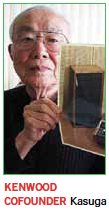
- David Weissman, 59, president, Precision Graphics.
- Dr. Amar G. Bose, founder Bose Corp. and former Massachusetts Institute of Technology professor.
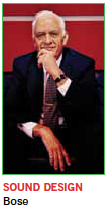
- Rob Tyrrell, 62, technical director, StenTech.
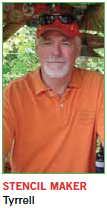
- Jack McCann, 54, president, Mega Fluid Systems.
- Dr. Jim Arnold, 63, longtime engineer AT&T Bell Labs and Motorola, and iNEMI consultant.
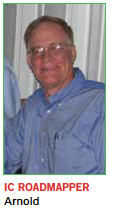
- Liu Fuzon, 14, 3CEMS factory worker.
- Milo Bryant, 82, Ayrshire Electronics chairman and chief executive.
- Jerry Murray, 82, Circuits Assembly and PCD&F West Coast editor, mentor and friend.
- Gunter Erdmann, 73, former president of MPM, invented the reciprocating squeegee, and held patents on solder paste and stencil frames.
- Seven unnamed Foxconn workers.
- Dr. John E. Karlin, 94, Bell Labs industrial psychologist and electrical engineer, designed the touchtone phone keypad.
- Glenn L. Seely, 56, sales and marketing manager at Southwest Systems Technology, Austin American Technology, and president of Alandra Services, a manufacturer’s rep company.
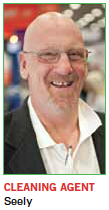
- Fred Hübner, 62, managing partner of GSS Grundig SAT Systems and ZVEI Satellite & Cable board member.
- Kenny Keegan, 53, sales engineer, Sager Electronics and TTI.
- Bill Henningsgaard, 54, former Microsoft executive.
- Dick Topping, 78, longtime sales representative for BTU and other electronics companies.
- Eric Lidow, 100, cofounder, International Rectifier.
- Paul Blanchette, 61, veteran IBM packaging engineer.
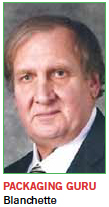
Who says a Tier IV EMS can’t have the foresight, and follow-through, of the big players?
Small tier EMS companies face many challenges, not the least of which is the ability to attract good workers and the access to capital to stay competitive. Generally, they don’t spend a lot of time thinking about models; that’s a practice for larger firms in which the executives don’t also spend time running the lines.
What small firms do understand, almost intuitively, is they can’t pay lip service to service. Speed counts. And niches count. Indeed, one could argue service, in itself, is a niche. SMT equipment, while sophisticated and highly engineered, is after all available to anyone who has the right amount of funds.
In that respect, Lightspeed Manufacturing has two niches. Its technical expertise lies in rework of ball grid arrays and other higher value components and assemblies.
And there’s the service component: President and founder Rich Breault has never met an order he wouldn’t turn around in 24 hours or fewer. He is a relentless ball of energy who spends hours each day talking with customers, suppliers, competitors, and just about anyone else in the industry who will answer their phone.
Based in Haverhill, MA, about 35 miles north of Boston, Lightspeed has been keeping other companies’ boards out of the scrap pile since 2003. (Breault also founded Netco, another Haverhill-based EMS, which he sold to Chase Corp. in 2000.) Its customers range from OEMs in the computing, defense, industrial, and more recently, aerospace end-markets, to other EMS companies, some large, some small. Lightspeed has customers throughout the Eastern seaboard.
The 8,800 sq. ft. factory maximizes its use of space, with hardly a square inch of vacant real estate to be found. In it are two full SMT lines, featuring DEK printers, Mydata placement machines, and Speedline Electrovert convection reflow. An SPI is next. Offline is x-ray and functional test. Breault keeps a close eye on spending, buying mostly gently used equipment, often at auction, and, if the price is right, occasionally well in advance of when he thinks he will need it.
During the past few years, Lightspeed has added more mechanical build and enclosure capability.
When we first toured Lightspeed in 2005, Breault explained that his goal was to take advantage of the high-flying Boston tech community by finding and teaming with an entrepreneur, perhaps one emerging from MIT or Harvard, and grow alongside them. His patience has begun to pay off.
In 2012, Lightspeed aided a program called the Haverhill Hardware Horizons Challenge, a local effort to highlight potential engineered products, by offering several prototypes to the winners of the content. He then hooked up with MassChallenge, a larger and global accelerator program based in Boston. Lightspeed put a small lab inside the MassChallenge headquarters, giving Breault access to scores of entrepreneurs, many of whom had ideas for new hardware. There, Lightspeed provides production engineering assistance, along with a full bench of equipment, including soldering irons, Solidworks and AutoCAD software, a Sciencescope meter. One
exception: a Formlabs 3D printer.
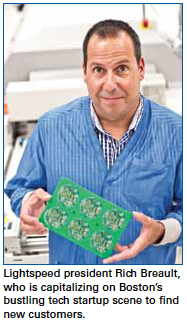
When MassChallenge moves next spring to a larger building, the Lightspeed Innovation Lab will grow with it. This time, Breault plans to put a full SMT line, including two Quad placement machines, a drill press and belt sander for mockups, hand soldering tools and other equipment on the same floor as the Challenge workspace, and staff it with a full-time operator, thus adding another level of capability (and giving himself a captive market of potential customers).
Through his connection with MassChallenge, Breault has landed four new accounts, including Bounce Imaging. Bounce is inventor of the Explorer, a low-cost handheld device full of embedded cameras and sensors that can be rolled into a dangerous environment in order to collect reams of data ranging from photos to temperature and CO readings, thus helping humans learn about – and avoid – potentially hazardous situations. The invention has been lauded by Popular Science and Time, among others. Bounce’s cofounder, Francisco Aguilar, says Lightspeed has been “essential” to Bounce’s success. “We could have been working on this for years. But it’s not just a question of time saved. We wouldn’t be if it weren’t for the MassChallenge and Lightspeed Manufacturing,” he says.
“We think that all this innovation comes from big companies with huge R&D budgets,” Breault notes wryly. “And in doing so we forget how innovation always changes things and levels the playing field. Through the MassChallenge, we constantly ask, ‘How do we help entrepreneurs build their dreams? And how do we get the ideas to reality and to market?’ ”
Too much growth too fast has foiled many an EMS player. The success of new customers like Bounce might push Lightspeed in ways the company isn’t currently designed to handle. In the event that Breault can’t keep up with a company that hits it big, he has a backup plan. “We want to partner with a Tier 1 to help them ramp,” he says. “And we want to partner with a machine shop and plastic injection molding manufacturer too.”
Breault sees a potential side benefit to the partnership as well: accomplishing big social goals. “My goal is to bring manufacturing jobs back to the inner city.” This shows unusually sharp and forward-looking vision for a small company.
In the six-year history of the CIRCUITS ASSEMBLY EMS Company of the Year, we have never selected a small tier company. It’s difficult for small companies to truly distinguish themselves. It’s even harder for them to establish a model and culture that can withstand changes in ownership. Whether Lightspeed could perform the way they do without Breault’s leadership remains to be seen. But his vision and execution has been sustained and extraordinary. And that’s why Lightspeed Manufacturing is our EMS Company of the Year for 2013.
Mike Buetow is editor in chief of CIRCUITS ASSEMBLY; mbuetow@upmediagroup.com.
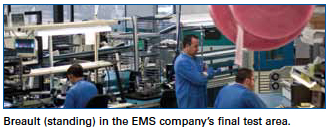
Ed.: For a related article on MassChallenge, click here.
MassChallenge, a not-for-profit accelerator program, aims to “create a bigger pie” by helping innovators get to market.
In a 27,000 sq. ft. office on the 14th floor of a Boston Harbor high rise, scores of innovators in residence toil away, trying to make their dreams reality. Four quadrants of cubicles form the basic layout, abutted by casual open meeting areas, a compact soundproof recording studio, and a galley kitchen. The walls are covered in encouraging aphorisms such as “What it takes” and “Take it until you make it.”
On an otherwise quiet Friday morning in October, a handful of residents listened intently to a series of talks on finding revenue sources. Among them was a team of advisors to the Mayor of London, dispatched to get a handle on the program in hopes of launching their own.
The program, in this case, is MassChallenge, a global accelerator program built around an annual competition whereby startups are graded, winnowed, trained and ultimately compete for no-strings-attached funding.
Now entering its fifth year, MassChallenge is embarking on a new expansion platform, even as it aids hundreds of small firms trying to beat the odds and make a difference in the software and hardware fields. It’s a startup for startups.
A ‘wacky’ model. MassChallenge is considered to be an accelerator, which is characterized by a short-term training program – up to four months – after which the entrepreneurs are back on their own. An incubator, on the other hand, takes the entrepreneur’s idea and matches it with professional managers. The latter also takes a bigger share of the startup’s equity.
In terms of its structure, MassChallenge is noticeably different from its peers. Most accelerators are run by investors, groups that expect a hefty return. MassChallenge focuses instead on innovator success. “Our model is a little wacky,” concedes director of marketing Robby Bitting, noting that under the firm’s framework, participants are essentially competing for grants.
Applications are soaring. In 2010, the first year of the Challenge, some 446 entrepreneurs applied. That number nearly doubled to 733 in 2011, and then nearly doubled again to 1237 in 2012. The current class of applicants was made up of nearly 1,200 companies from 44 countries.
From the initial submissions, a group of more than 300 judges with expertise in a broad range of disciplines pares the list to 128. Those lucky few take up residence at the MassChallenge headquarters in the so-called Innovation District on Fan Pier in South Boston. Their exclusive perch allows the inventors panoramic views of the Boston Harbor skyline, including regular flights landing at Logan Airport, just across the inlet to the bay.
Inside, the site has the character and spontaneity of any of a thousand Silicon Valley startups. Game tables, colorful oversized furniture and scores of cubicles reinforce the notion that innovation breeds innovation. Participants are encouraged, through the office layout and the accelerator’s instructional and social programs, to mingle and share ideas. And share they do, despite the fact that each company is competing for a share of roughly $1.5 million in cash prizes. But therein lies the magic: The founders believe the “greed is good” thinking spawned by many a Wall Street guru is fallacy, and MassChallenge is their response.
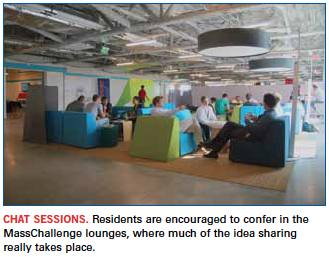
Creating a bigger pie. MassChallenge is the brainchild of John Harthorne and Akhil Nigam, a pair of former Bain Consulting whiz kids who grew disenchanted with the relentless emphasis on profits over true and potentially radical change. Both were itching to create startups and create value. Then the market crashed. “Money for entrepreneurs dried up,” noted Bitting. “So much of this had to do with greed. People wanted a bigger slice of the pie without creating a bigger pie.”
Says Harthorne: “For 30 years, business schools have force-fed this idea that profit is what matters. We’ve seen with the recent recession that that model doesn’t work. You build a company because you want to do something for the customers. Only once you’ve (captured) their love can you then extract a profit.
“There are a lot of short-sighted strategies with a disregard for rational thought. By focusing on profit, you diminish it. By solving problems, you create a new value that doesn’t exist.”
The pair founded MassChallenge in 2010 in hopes of spurring an innovation renaissance. “Making a profit is not the issue. It’s getting the innovators to collaborate and push each other higher,” Harthorne says.
MassChallenge does this through somewhat traditional accelerator means, offering weekly classes on marketing, sales, building an organization and attracting funding, taught by a host of international stars in their respective disciplines. Funding comes from blue chip companies inside and outside the tech field, such as Microsoft, IBM, Fidelity, American Airlines, and various academic institutions, among others. Innovators are paired with mentors, at an average ratio (MassChallenge seemingly measures everything) of 3.6 mentors per startup.
Residents, like those on that October morning, experience an extensive curriculum that covers everything from leadership to team building, finance and pitch practice, brand building, marketing to the public, and media. MassChallenge attempts to help residents achieve in four months what would typically take a year or more. The mentors help oversee deadlines and progress.
It sounds like a hyper-compressed MBA, but that’s not the idea, the founders say. Rather, MassChallenge program is intended as a launching pad. Finalists, they say, want the access to the experts. “They want too many opportunities, not too few,” stresses Bitting.
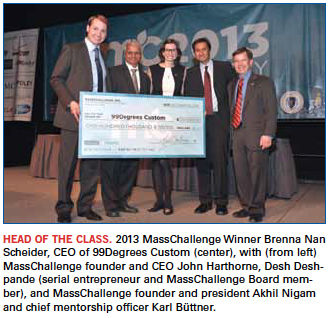
Major impact. What also sets MassChallenge apart is its fee structure. For starters, it’s a not-for-profit organization. Entrepreneurs pay just $200 to apply. Unlike other accelerator programs, the focus is on impact, not revenue generation. “Impact,” the founders admit, is a nebulous term, and intentionally so. “We like companies that are solving a very technical problem. It also allows us to take on social enterprises that are also nonprofits,” Bitting says. Indeed, MassChallenge takes no equity in or places other restrictions on its residents.
Judging is handled by industry experts, with four to six judges per application. The first step is a review of all the online submissions, which takes place each April. The pool is then reduced to about 350 companies. The next phase involves pitching the idea in front of the judges, who assess the impact of the applicant’s idea. That impact could be very different, based on the industry the end-product is designed for. In one instance, it might be a cure for a disease. Or it could provide a method for bringing education to people who need it. Perhaps it is a technical solution (see sidebar). More conventionally, it could have the potential for a high growth business that would create a lot of jobs.
Judges evaluate each idea on its potential impact and the ability to achieve that impact, or in their parlance, “traction and feasibility.” They look at the business model, the customer acquisition strategy, the founders and their team (most of which are very small), the potential for patents (as well as competing ones), and the competitive landscape. The face-to-face presentation takes 20 minutes, after which the judges cut the applicant pool to 128.
Then the fun begins. The pool takes up residence at the MassChallenge headquarters. There, they will spend the next four months splitting time between polishing their concepts and the crash course in finance and marketing. Come September, the residents will pitch their ideas again, at which point the judges will determine which 26 are eligible for cash grants of up to $100,000. (Herein is another difference between MassChallenge and other accelerators, most of which award seed money at the beginning of the program, not the end.) At the beginning of October, the lucky 26 will make their last pitch, and judges provide written feedback and single out 12 companies for $50,000 awards and four finalists for $100,000 grants.
The open floor plan and mixing of disciplines and industries goes a long way toward igniting the innovative spirit, the founders say. On a given day, there might be 300 people working in the MassChallenge office. “A mobile company has no business meeting with a biotech firm, except there’s a certain level of comfort seeing someone sitting by you and achieving. It’s why people work out in groups. We want them to see each other. They make a sale and go ‘high five’ each other,” Bitting says.
In theory, the rapid experimentation also permits companies to fail quickly and move on to the next step. In truth, many are growing. To date, 89% of the 489 companies accepted to the program remain active.
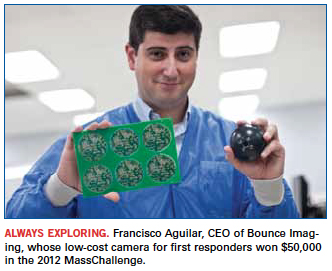
Recycling knowledge. The mentor program is a mix of inbound and outbound experts. Sponsors provide both talent and legal advice. Also, there’s a pay-it-back aspect, as some of the finalists act as mentors for future classes. Many enter the mentor program and offer advice on both the technical program and the side issues, such as dealing with investors, the organization says.
Many of the inventors remain in the Boston area even after their apprenticeship is over. Even those international participants who return abroad tend to maintain their new local connections. The obvious question then is, Could an AustinChallenge or SanJoseChallenge be far off? In fact, there is interest in London to develop a similar program (the discussions involve locating the program in a formal royal palace), and MassChallenge Israel is in the works. Other places being actively explored in the US include Houston, Denver, North Carolina, Washington, DC, and ultimately California, while overseas interest has been focused on Switzerland, Berlin, Russia and Columbia. MassChallenge isn’t worried about cannibalizing the existing program because two-thirds of the current finalists come from Massachusetts.
The vision Harthorne lays out for MassChallenge is audacious: to restore the credibility to the soul of America and the world. “There’s this deep sense we lost our way. There’s too much emphasis on profits. We’ve become perverted about it. It’s not a good way of building sustainable systems. It’s incredibly counterproductive. The reading on the Statue of Liberty isn’t, ‘Give me your profits and money.’ ”
What Harthorne isn’t is some Harvard MBA with a few years of finance under his belt who now dispenses conventional wisdom like John D. Rockefeller gave away dimes to Depression-era children. (Although in fact, he is a graduate of MIT’s Sloan School of Management.) Harthorne puts to use his own experience in starting up MassChallenge to share with teams that enter the accelerator. “The first year of MassChallenge,” he notes, “we were an earlier stage startup than 60% of the companies we worked with.”
Those who have successfully reached the finals speak highly of their experience. Molly Farison is a senior in electrical engineering whose company, Lilypad Scales, created an easy-to-use scale that helps wheelchair users track their weight on their own, in their home. The scale resembles a thin 4 x 4' rug and comes with a remote control-like reader. “You can’t just sell your product in an online store,” notes Farison, who calls her time in residence “a quick and dirty practical MBA. Finding the best distributors for your product and getting them to sell it is the key to scaling.”
For Francisco Aguilar, CEO of Bounce Imaging (see sidebar), MassChallenge was invaluable for finding everything from engineers to legal help to access to software programs such as SolidWorks, which otherwise would have been expensive to license. The cofounders “know everyone in the world and want to connect you,” he says. And while those with experience in electronics like himself may know how to design a product, the mentors at MassChallenge have the background in finance and investing, customer segregation and publicity to get a company off the ground. Bounce has received accolades from Popular Science, and the Explorer was named one of Time Magazine’s Best Inventions of 2012.
“MassChallenge has been essential to our success and traction,” Aguilar says. “We could have been working on this for years.”
MassChallenge is open to any early-stage entrepreneurs, be they in software or hardware. What all teams must have, Harthorne says, is a good plan, the willingness to work their butts off, and to be lucky. The competition helps, too. “You can genuinely hurt a startup by being too easy on them.”
Electronics engineers take note: MassChallenge is in the business of helping startups, not hurting them. We may take our iPhones and Bose speakers for granted today, but every company started with an inventor and an idea. MassChallenge has created a pathway for the next Steve Jobs or Amar Bose to turn their vision for a better tomorrow into reality. That’s an exciting path to be on.
Exciting Times
“Our industry has gotten (expletive) boring. We need to make it exciting.” So says Rich Breault, president of Lightspeed Manufacturing, the CIRCUITS ASSEMBLY EMS Company of the Year.
Breault’s frankness belies the serene landscape inside One Marina Park Drive, where engineers and innovators are quietly plugging away at their cubes. A few take up a game of Ping Pong, while others mill in small groups of two or three, comparing notes like college students in a library, which some still are, it should be noted.
Breault began teaming with MassChallenge two years ago. In 2012, Lightspeed put a small lab inside the Boston accelerator’s headquarters. The EMS firm provides onsite assembly help, aided by a collection of software (Solidworks and AutoCAD) and hardware tools (soldering irons, a Sciencescope meter, and a Formlabs 3D printer). When MassChallenge relocates next year to another site nearby, Breault plans to expand his operation to include a full SMT line, including a pair of Quad placement machines building prototypes, a drill press and belt sander for mockups, and a full-time staffer to run the Lightspeed “Answer Desk.”
Lightspeed’s involvement has led the EMS firm to Bounce Imaging, on whose board Breault now sits. Struck and dismayed by the aftermath of the Haiti earthquake in 2010, when responders could not get quickly to the hundreds of thousands of victims, Bounce founder Francisco Aguilar conceived a low-cost camera for first responders that can be used without special training. Aided by Breault’s manufacturing help, the company’s device, named Explorer, won $50,000 in the 2012 MassChallenge.
With the Explorer, Aguilar sees a huge potential market for police and firefighters who on a daily basis experience the same basic problems, if to a different degree. And since then, Lightspeed has picked up three additional customers via the MassChallenge.
Mike Buetow is editor in chief of PCD&F/Circuits Assembly; mbuetow@upmediagroup.com.
Ed.: For a related article on Lightspeed, click here.
Press Releases
- Industry Leaders Koh Young, Fuji America, and Creative Electron Unite to Launch The SMT Future Experience
- NanoFlowX Announces Strategic Partnership with Bentec Ltd to Accelerate PCB Protection Innovation Across Europe and India
- Strong signal for the industry: productronica 2025 drives positive industry trend
- Sharpen Your ESD Skills: CE3S Announces Desco’s First ANSI/ESD S20.20 Training Series for 2026


